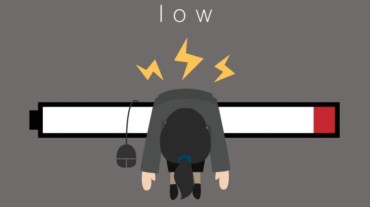
If you’re one of those people, who meticulously take out time to spend with their grandparents–then there’s a high probability you’ve already heard their rant about the changing times in ‘ghor kalyug’.
Sure, food adulteration and deteriorating character of people is often a part of their complaints. But the one thing that your grandparents won’t ever miss or stop complaining about is the lifestyle we millennials lead.
Here’s reinstating your grandparents’ belief and talking about six millennial health problems that are a culmination of our modern-day habits as well as technological advancements:
1. Text-neck syndrome
No points for guessing that this term coined by US chiropractor, Dr. DL Fishman, refers to the modern-day spine ailment stemming from millennials looking down at their cell phones, tablets, and other wireless devices for too long and too frequently.

The result? Well, severe pain in the upper backbone and back muscles, neck pain, hunched shoulders, an unnatural bend in the neck, a poor posture for life, and the pain from your neck extending till your arms and shoulders too!
With several studies pointing out numbers as huge as 79% of the population indulging in excessive smartphone use, text-neck syndrome is on a rise and how. The only respite though, is to minimise the phone usage and keep the phone at your eye level while using it.
2. Selfitis
Just as the name suggests, this disorder identified by the American Psychiatric Association, refers to one’s excessive desire or obsession to capture selfies and upload them on social media.
Why else do you think people these days are willing to risk their lives by taking selfies on mountain cliffs, while driving, and while trying out anything adventurous that requires their undivided attention?
3. Nomophobia
According to a study published in the Journal of Family Medicine and Primary Care, nomophobia is a psychological condition ruled by the fear of being devoid of mobile phone connectivity due to reasons such as a technical problem in the phone, its battery dying down or a problem with internet connectivity. This can be so extreme that it can lead to social anxiety and panic disorders as well. Can you beat that?

Quiz time: Just how addicted are you to your smartphone? Let this quiz answer that for you
Select Topics of your interest and let us customize your feed.
PERSONALISE NOW4. Cyberchondria
Surely, the Internet has its own perks—the most-cherished one being the abundance of information and knowledge it can provide us with. However, a study published in the journal Psychiatry Research talks about the downside of this availability of information leading to a clinical phenomenon in which “repeated Internet searches regarding medical information results in excessive concerns about physical health”.
Also, listen:
Don’t we all Google our health symptoms and try to be our own doctor sometimes? But you know what, this can lead to health anxiety if your cyberchondria goes to an extreme level.
5. Burnout syndrome
This condition highlighted time and again by psychologists the world over is something that affects millions of millennials world over. The World Health Organization defines it as an “occupational phenomenon” resulting from unmanaged workplace stress that can lead to anxiety, panic, fatigue, depression, reduced professional efficiency, and an emotional distance from one’s job and day-to-day activities.

But, it can also happen to people, who are simply bored of the monotony of life. Loneliness, a lack of social contact, and exercise are also to be blamed for it.
6. The sitting disease
The sitting disease, a.k.a., a sedentary lifestyle is something that we’re all aware of. Ever since driving replaced walking; watching television, chatting, and gaming replaced outdoor activities, and technologically-advanced devices minimised the need for physical labour-a sedentary lifestyle hit the world like a plaque that simply refuses to leave. The result? No exercise or physical movement leading to the development of a host of modern-day health conditions such as hypertension, diabetes, heart problems, stress build up, weaker bones, and obesity to name a few.